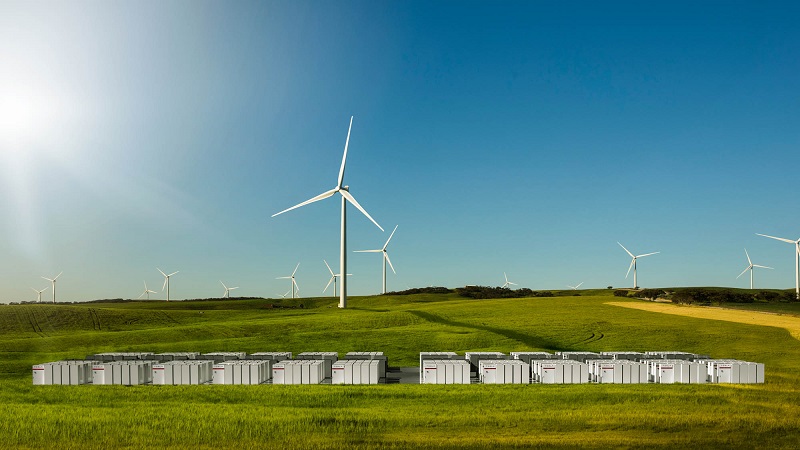From zero to 100 MW in 60 days – Tesla’s impressive speed is not merely reserved for the electric vehicle (EV) sector. The U.S. firm, headed by doyen of the tech and entrepreneurial world Elon Musk, has today turned on the world’s largest battery in South Australia – some 40 days ahead of schedule.
The 100 MW (129 MWh) Hornsdale Power Reserve neighbors the Hornsdale Wind Farm – owned and operated by French renewable developer Neoen – and has been developed to deliver stability and greater reliability to South Australia’s state electricity grid. The size of the battery reserves is enough to power 30,000 households local households.
Having been bedevilled by a period of electricity supply instability at the beginning of the year, South Australia’s governors were wrestling with the challenge of keeping the lights on, particularly during the hottest days of the year when air conditioning units across the state are switched on en masse.
Following a state-wide blackout in late 2016, Mike Cannon-Brookes, the founder of Atlassian (an Australian software company) pledged to offer and arrange financial and political support to back a battery capable of stabilizing the grid, calling on Tesla to see what they could do.
Musk duly took to Twitter in March to promise: “Tesla will get the system installed and working 100 days from contract signature, or it is free. That serious enough for you?”
The Hornsdale lithium-ion battery was duly installed ahead of schedule (the connection agreement was signed with Electranet on September 29) in Jamestown on Friday, December 1, after much hustle by local developers and backing from state politicians. South Australia premier Jay Weatherill – who turned the battery on – remarked: “I want to express my gratitude to the workers who have constructed this battery. They have every right to be proud of what they have constructed.
“While others are just talking,” he added in a barely veiled dig at the federal government’s stuttering renewable energy plans, “we are delivering our energy plan, making South Australia more self-sufficient, and providing backup power and more affordable energy for South Australians this summer.”
Clean Energy Council chief executive Kane Thornton was full of praise for the South Australian government’s leadership in delivering such a project in record pace.
“Our energy system is changing fast, and the energy storage installed next to the Hornsdale 3 wind farm shows just how fast modern solutions can be delivered to meet the challenges confronting our ageing power grid,” Thornton said.
“Just as amazing is the power of social media to get things moving, given it is now less than a year since a deal was half-brokered between two tech billionaires on Twitter. I would like to congratulate the South Australian Government, along with our members Tesla and Neoen for an important project which will help to secure the state’s power supply in time for a hot summer.”
In March, Musk said that the battery array would be built at a cost of US$250/kWh, although the final investment cost has not been publicized. The installation was built using Tesla's Powerpack batteries, which are comprised of Samsung 21700 cells. Collectively, the battery can deliver 129 MWh of storage capacity.
The facility is jointly owned by Tesla and Neoen, with South Australia's government permitted to call on the reserve power stored in the batteries under certain conditions, such as during a blackout and – more likely – to smooth out electricity supply during periods of peak demand.
This content is protected by copyright and may not be reused. If you want to cooperate with us and would like to reuse some of our content, please contact: editors@pv-magazine.com.



3 comments
By submitting this form you agree to pv magazine using your data for the purposes of publishing your comment.
Your personal data will only be disclosed or otherwise transmitted to third parties for the purposes of spam filtering or if this is necessary for technical maintenance of the website. Any other transfer to third parties will not take place unless this is justified on the basis of applicable data protection regulations or if pv magazine is legally obliged to do so.
You may revoke this consent at any time with effect for the future, in which case your personal data will be deleted immediately. Otherwise, your data will be deleted if pv magazine has processed your request or the purpose of data storage is fulfilled.
Further information on data privacy can be found in our Data Protection Policy.